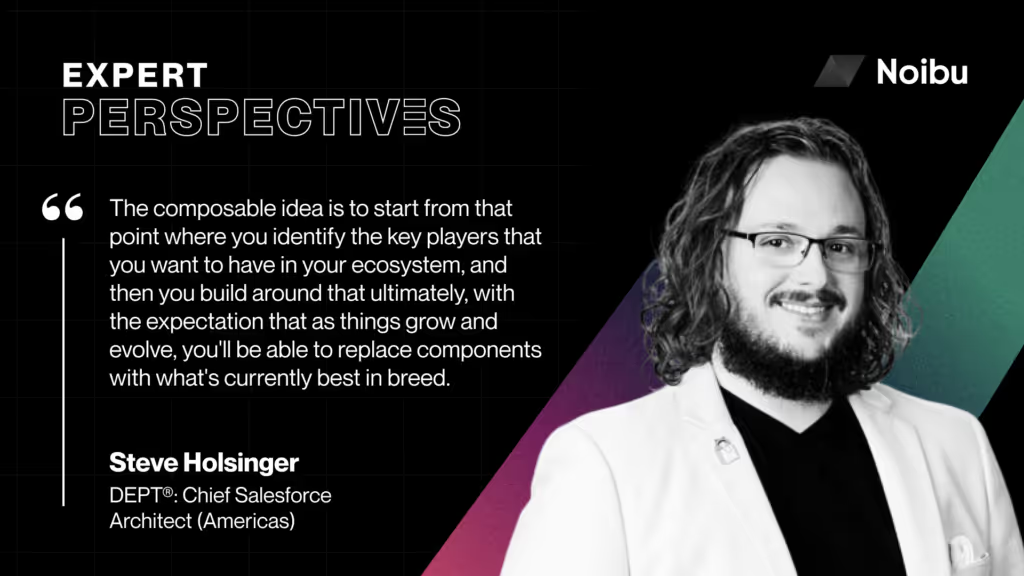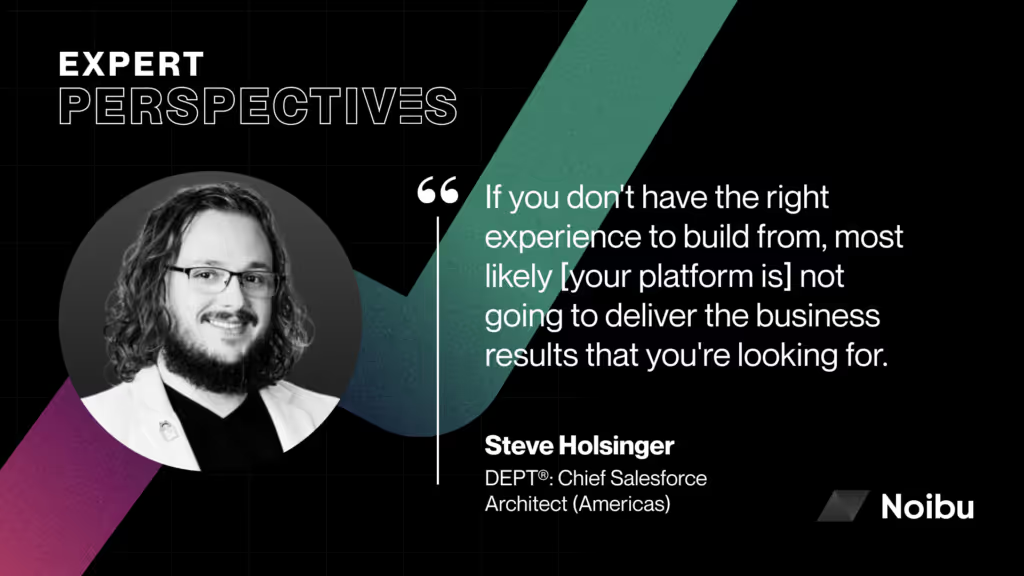Ecommerce expert Steve Holsinger of DEPT: Why fast-growing businesses need to go headless
.avif)
Every retailer inevitably faces the decision of whether to use a monolithic commerce platform or opt for a composable approach, but with pros and cons to both, it can be hard to determine which is right for you.
In this episode of The Ecommerce Toolbox: Expert Perspectives, host Kailin Noivo is joined by Steve Holsinger, Chief Salesforce Architect at full-service digital agency DEPT. Together, they explore the differences between composable and headless commerce and discuss the reasons someone might opt to use a composable approach, drawing on examples from DEPT’s customer base.
What is composable commerce?
A monolithic platform has it all. There’s a promotion engine, catalog management, and customer management all built into the platform, alongside the experience layer.
Composable commerce offers a more flexible option, allowing you access to all these parts of the monolithic platform without forcing you to stick to them all. Instead, you can look at the ecosystem and find the right fit for your business. For example, maybe the built-in promotion engine doesn’t quite fit the bill.
By taking a composable approach, you can instead find an external engine that you can integrate into your system. Instead of starting from a big foundation, you identify the key players required in your ecosystem and build around them, with the expectation that as tech evolves and your business grows, you can replace components with the best in the market.

Headless commerce, on the other hand, is one particular way of composing your experience. Within this, you have a clear separation between the experience layer and the systems that drive it. This means you may have a monolithic platform underneath, with composable aspects added on top.
Why choose composable?
From witnessing some of DEPT’s customers choosing to opt for a composable model, Steve is clear that you need to have a business-based reason for doing so.
The KPIs he has seen drive that decision are often speed and performance. The idea behind this is that if you can improve speed and performance, then you can achieve a higher conversion rate.
For some of DEPT’s customers, Steve has witnessed a one second decrease in page load time yielding a 25% increase in conversion. Another factor to consider is whether your business goals can be appropriately addressed by a monolithic platform.
For example, if you were offering a bespoke service, you may find that your existing platform has too many constraints to allow you to achieve the experience you want to give each of your customers.
How should you maintain your platform?
No matter whether you are using a monolithic or composable platform, at some point you will face the decision of whether you build and maintain it yourself, or whether you should outsource it to systems integrators (SIs) and specialists.
Steve advises that, unless you have a strong software engineering business unit that has a rigorous process, then you should engage with an external SI. Building and maintaining your platform is a very intensive process, involving many moving parts, and if it’s not built in the right way, it won’t deliver the right results.

Once the platform is built, you then face issues surrounding the maintenance of it. Often, if the person who built it is not maintaining it, you will face a knowledge gap that will cause downstream impacts. Of course, with strong product team members, this will be less likely, but ultimately you need strong communications of important documentation.
If an SI works with you to build the experience, part of their service should be to produce the appropriate documentation to allow your team to support it. Steve recommends steering clear of any companies that don’t offer that as standard.
Listen to the full episode below!
Tune in to this episode of The Ecommerce Toolbox: Expert Perspectives with Steve Holsinger and Kailin Noivo to learn more about composable and headless commerce.
Apple: https://bit.ly/4dSkFAo
Spotify: https://bit.ly/3VeeC1O



.avif)
.avif)